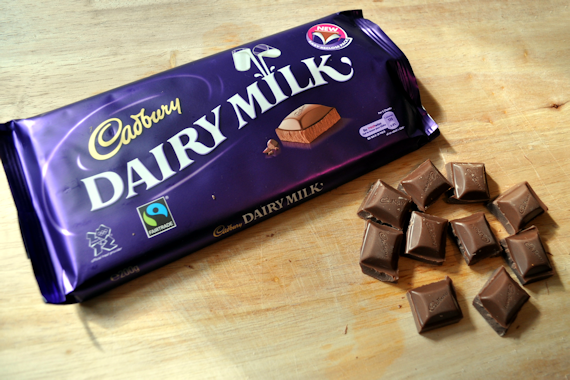
That lucious, lovely, silky, creamy smooth taste……..
Chocolate and I would be joined at the hip if I weren’t diabetic. Not just any chocolate though, as I’m not a true chocolate connoiseur. I like milky chocolate, creamy chocolate, the not bitter milk chocolate that takes my breath away and stings my tongue. Dark chocolate makes me thirsty. I can’t find any way around it, but chocolate is versatile enough to be on my shopping list, even with the diabetes. I just eat it in moderation.
A few chocolate facts
- People mistakenly associate chocolate with diabetes, heart disease and high blood pressure in all quantiites. For sue, eating a couple of hundred grams of chocolate a day equals a recipe for unhealthy living, but that’s not how most of us eat chocolate.
- Chocolate, via cocoa, does actually contain some beneficial to health ingredients, which in some studies, have even suggested chocolate in moderate quantities can help reduce cholesterol.
- Chocolate is high in calories, no matter which version is eaten. White chocolate, dark chocolate, milk chocolate, they’re all very high.
- Some studies claim that hot chocolate or low levels of chocolate consumption via drinking hot chocolate, can even help with dementia and cognitive function, but there is much research required to confirm or build on that.
- In the UK, researchers found riders used less oxygen cycling in trials after eating dark chocolate, which cycling weekly reported on in 2015, and regains covering in the news now and then.
Light and Dark Chocolate – What’s the Difference?
Dark chocolate is often portrayed as being the more ‘healthy,’ option. To be fair, I don’t think there’s terribly much in it if someone were to binge on chocolate.
As a rule, they are both in the region of around 550 calories per 100g. That’s a significant amount of sugar, fat and energy in such a small amount of food.
I’ve picked my favourite chocolate, Cadburys Dairy Milk, to do this comparison, although the internet keeps trying to persuade me that dark chocolate is better for me, I can’t help what I like to eat.
| Nutrient | Dairy Milk (100g | Bourneville (100 g) |
| Energy | 534 kcal | 524 kcal |
| Protein | 7.3g | 4.1g |
| Carbohydrate | 57g | 60g |
| Fat | 30g | 28g |
| Fibre | 2.1g | 6g |
| Salt | 0.14g | 0.01g |
| MILK SOLIDS 20% MINIMUM, ACTUAL 23%. COCOA SOLIDS 20% MINIMUM. CONTAINS VEGETABLE FATS IN ADDITION TO COCOA BUTTER. | COCOA SOLIDS 36% MINIMUM. CONTAINS VEGETABLE FATS IN ADDITION TO COCOA BUTTER. |
Summary for Chocolate
As chocolate has such high calories, it’s always going to a food where moderation is the only sensible way to consume it, whether enjoy it or not. Some studies are suggesting chocolate has high levels of antioxidants and is helpful for health, but like all other food, moderation is sensible with a varied diet.
As a diabetic, I’ve heard the term “diabetes on a plate,’ to describe different foods, which is a pretty ignorant way to look at any food. For insulin dependent diabetics, sugar is what can save their lives if they go into a hypo, and for the non insulin dependent diabetic, one square of my favourite chocolate is always going to help alleviate a chocolate craving, whereas any amount of squares of a substitute or so called diabetic friendly chocolate, are still going to leave me disappointed and wanting the real thing.
As with everything, the other junk saying is ‘nobody ever got fat eating apples.’ Seriously, that just shows me someone is ignorant. It’s a load of old cobblers. Calories is he energy out v energy in argument, and yes, there are better calories than others, depending on the food eaten, however, if your body only uses 1300 calories a day to live, and you eat 1400 calories a day of apples, yes, you’ll gain weight eating apples. That might mean 25-30 apples a day, but yes, it’s very possible to get fat eating apples.
In the end, no harm has come to anyone from eating a few squares of chocolate. A few squares, not a few bars, or a few hundred grams a day. There’s a difference. For me, bring on the chocolate. I even cook with my choice of milk chocolate. Cooking chocolate is always disappointing and has no taste for me. I’ll always go for the real thing or do without as a flavouring. I’m always happy as I don’t really like eating cake, so give me a square of chocolate any time. My blood sugar is perfectly fine.
Bring on the smooth milky taste for me…..






Can I put cooked garlic mushrooms in the fridge for a couple of days
Neeps is just short for turnips.
Made this last night and it as perfect , i never made bread before and its the first time i…